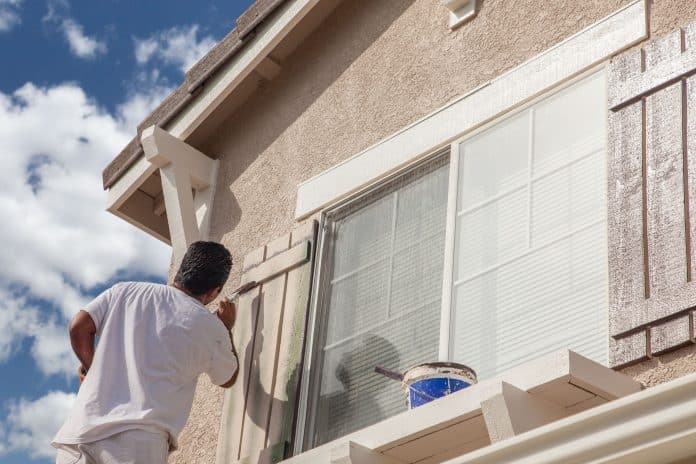
Introduction
This might not have occurred to you, but upgrading your windows is a really good investment. In this day and age, everything is infused with technology. Well, windows are not an exception to that rule. It is no longer just wooden frames and glass that make up a window. Now, you will find different factors in windows that you might not have considered before. If you prefer blasting your music at three in the morning to concentrate on work during late nights, then noise cancelling windows is a good option for you. On the other hand, you might want to upgrade your home, but you cannot afford it. In that case, replaced windows bring in more natural light and give your home a different feel to it.
Are There Different Types of Windows?
There are different types of windows and window frames. This means that you have a range of options to choose from. (After all, this is the 21st century and today’s trend is all about options.) However, as much as furniture shopping is fun, this is not furniture shopping. You will need to determine exactly what you need when you are choosing your windows and window frames. (It is hard work; do not let anyone tell you otherwise.) You should consider what you need in your windows that will complement your home before you decide to go window shopping. (We mean shopping for windows, not the other kind of window shopping.)
Aluminium or Metal Frames
Aluminium and metal frames are considered the cheapest option that you can find for window frames. With aluminium and metal frames, they are sturdy and light. Additionally, they do not require almost any maintenance whatsoever. But, aluminium and metal frames heat up very quickly. This means that you will find very poor insulation with this particular window frame. There is a way to reduce the heat of the metal frames, which is providing a thermal break. (A thermal break is a plastic strip between the outside frame and the sash, which increases insulation. Or, so we think. Ask your handyman about it too!) However, if you plan on getting a thermal break, then you will need to pay more.
Composite Frames
As for composite window frames, they are made up of a combination of wood products. (It is basically a bunch of different wood types that merged together.) You might find that some of them are mixed with polymer plastics. This type of window frames is stable and extremely reliable, since they have the same structure as wooden frames. But, they are more resistant to moisture and decay. This means that they will not be ruined as easily as conventional wooden frames. As an added bonus, they have the same thermal insulation as standard wooden frames. This means that they will not heat up as easily as metal frames.
Fiberglass Frames
Fiberglass frames are the third type of window frames that you might find. With fiberglass window frames, you will find that they are unwavering and stable for long-term use. Also, they have air cavities that will help with insulation. This will help make sure that your home is not stuffy and heated during the summer. (Or, a really hot winter day, it depends on the season. .) Fiberglass window frames have air cavities that give them an advantage to wooden frames or vinyl frames, performance-wise.
Vinyl Frames
Vinyl window frames are window frames that are typically made from polyvinyl chloride (PVC) and a dash of ultraviolet light (UV) stabilizers. These types of window frames keep sunlight from negatively affecting the material. Vinyl window frames do not need for you to paint it and they have very superior moisture resistance. These vinyl frames have hollow cavities, which can be filled with insulation. This makes their thermal properties much better than conventional vinyl and wood window frames. Insulated vinyl helps with preventing sunlight from breaking down the material and is very moisture-resistant. This means that if you are interested in vinyl, you do not have to worry about the sun ruining your windows.
Wood Frames
Wood window frames are the final type of window frames that you might find in your regular department store. With wood window frames, insulation is pretty efficient. However, there is one thing that you should consider about wood window frames. This type of window frames requires regular maintenance. With aluminium and vinyl window frames, you might not need as much maintenance. Also, metal window frames and wood window frames have lower thermal performance, which is an important aspect to consider.
How Do I Know Which Window Is The Best Option For Me?
According to the Department of Energy, there is such a thing as the best option for your home. Each home is different, whether it is the location, area, or even the wind direction. All of these aspects are important when you are selecting new windows. If you need tips on how to select the right windows for you, then you should listen to the Department of Energy. According to them, the following window selection tips can really help you:
- “Look for the ENERGY STAR and NFRC labels.
- In colder climates, consider selecting gas-filled windows with low-e coatings to reduce heat loss. In warmer climates, select windows with coatings to reduce heat gain.
- Choose a low U-factor for better thermal resistance in colder climates; the U-factor is the rate at which a window conducts non-solar heat flow.
- Look for a low solar heat gain coefficient (SHGC). SHGC is a measure of solar radiation admitted through a window. Low SHGCs reduce heat gain in warm climates.
- Select windows with both low U-factors and low SHGCs to maximize energy savings in temperate climates with both cold and hot seasons.
- Look for whole-unit U-factors and SHGCs, rather than center-of-glass U-factors and SHGCs. Whole-unit numbers more accurately reflect the energy performance of the entire product.” (Department of Energy)
Benefits to Upgrading Your Windows
You might probably find that upgrading your windows is a weird investment and it might seem unnecessary. However, that is not true. Upgrading your windows is a very good investment that will help increase your home’s market value. There are many benefits that come with upgrading your windows. You could have better security and safety in your home. Also, you can reduce the allergens and dust that enters your home. (So, less cleaning for you.) If you still cannot see the benefits, then you can always count on the fact that upgrading your windows will improve energy efficiency. (Yay, save the environment!) This article will let you know about all the benefits you will gain from upgrading your windows. (Pella Corporation)
Increased Market Value on Your Home
When you upgrade your windows, this is a huge payoff for you. You will be able to increase your home’s market value with new and upgraded windows. During the selling process, you might find that potential home-buyers are discouraged with purchasing a home that needs its windows replaced. If you are unsure about upgrading your windows, then you should not wait until you are going to sell your home. You should upgrade your windows and enjoy its benefits now, then benefit from your home’s market value later. (There is no need to wait and see. Just enjoy it now and you might even get your money back from your home’s increased market value.)
Better Security And Safety for You and Your Family
In the case of an emergency, you need a quick getaway; upgraded windows are your best friend. Whether it is a fire or a scene from a horror movie, you do not want to be stuck with a window that does not open easily. Outdated windows can be a safety hazard. New wood, fiberglass, or vinyl windows will provide homeowners with fresh air and increased functionality. It might seem like a long shot, but it is possible. There are newer windows that have enhanced security options. This includes: security sensors or modern locks, which will help you sleep well at night. (You will not need to sleep next to a baseball bat anymore.)
No More Dust And Allergens, Only Clean Air For You
Newer windows will protect you from dust bunnies and allergens. With newer window models, there are between-the-glass shades. Between-the-glass shades and\or blinds are placed between the glass panes of the window frame. The between-the-glass shades and\or blinds protect your home from dust and residual dirt. With modern windows, you can limit the amount of allergens in your home and you will not have to clean so much. Additionally, you do not have to worry about the between-the-glass shades and\or blinds getting in the way; they are cordless!
Comfort, Comfort, and More Comfort
With newer windows, you do not have to worry about cold or hot areas in your home. Newer window models prevent heat from entering and reduce the amount of UV rays in your home. Also, upgrading your windows will not leave any space for air leaks. Since newer windows have tight seals, you will not find any air drafting in. Upgraded windows allow you to control the climate in your home and that would lead to reducing your energy bills. (Think about it. If it is not too cold or too hot, then you will not need to open your heater or your AC.)
Better Energy Efficiency to Help The Environment
There are certain windows models that can actually help lower the cost of your utilities and increase your energy efficiency. Wood, vinyl, and fiberglass windows provide an energy-efficient option. With wood windows, there is a very slim chance for heat transfer and wood naturally provides insulation. As for fiberglass, you will find that it can handle extreme changes in your home’s temperature. This is perfect, if you live somewhere with extreme weather conditions. Finally, vinyl windows have several air cavities. This will help with keeping your home warm in the winter and cool in the summer. (That is the point, isn’t it?)
No More Noisy Neighbors to Bother You
Noise pollution is both annoying and unnecessary. But, if you decide to upgrade your windows, you will not have to worry about that anymore. New windows models help limit the “outside” noise as much as possible, which is great if you have had a long day at work or a terrible headache. (Or, if you simply just prefer quiet.) Insulating frames and triple-pane glass will do the trick, reducing noise from outside and stopping it from coming in.
It Will Look Great! (Really.)
Upgrading your windows means that you can significantly improve your home’s appearance. You will be improving your home’s performance and appearance by changing a window or two. There are several different types of windows models that come in different interior designs to match the style of your home. Whether you are interested in a sleek design or a colorful splash, you can add your personality to your windows.
Say Goodbye to Regular Maintenance Check-Ups
By upgrading your windows, you will be choosing a low-maintenance solution for your home. There are many newer models that do not require a lot of maintenance. You will find that the windows’ structures are self-sufficient and you can do it all yourself during a boring day on the weekend.
Conclusion
So, maybe you should consider upgrading your windows. It is not an easy task, but it might be necessary. You will be saving money and reducing the use of utilities. Not to mention that you will be increasing your security at home, which is never a bad thing. If you are also the type of person who prefers quiet, but you live in a big city, then your windows can close off the world for you. Upgrading your windows will increase your home’s market value and you can enjoy staying home more!
Works Cited
Department of Energy. Update or Replace Windows. 2021. 12 09 2021 <https://www.energy.gov/energysaver/update-or-replace-windows>.
Pella Corporation. 8 Benefits of New or Replacement Windows. 23 03 2020. 12 09 2021 <https://www.pella.com/ideas/windows/replacement/benefits-replacement-windows/>.


















